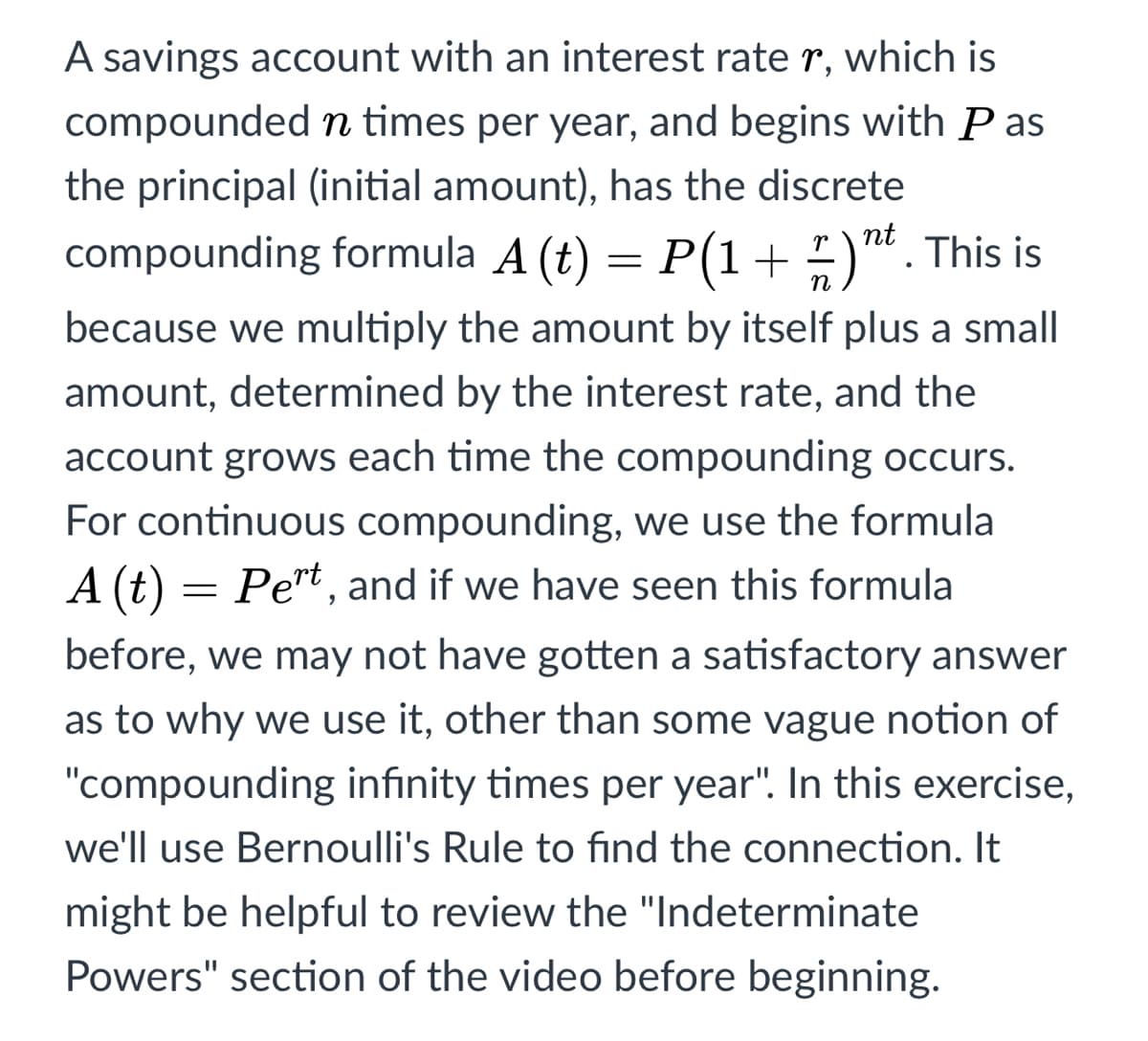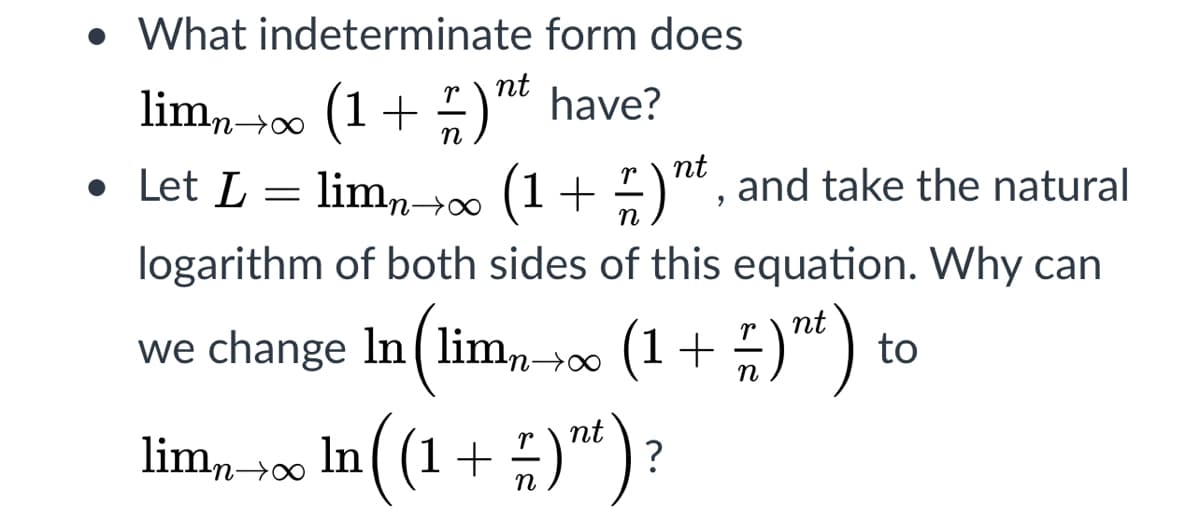• What indeterminate form does nt lim,00 (1+)" have? • Let L = nt lim,-+0 (1+ )", and take the natural logarithm of both sides of this equation. Why can we change In (lim, (1+)) to In(1 limn→0
• What indeterminate form does nt lim,00 (1+)" have? • Let L = nt lim,-+0 (1+ )", and take the natural logarithm of both sides of this equation. Why can we change In (lim, (1+)) to In(1 limn→0
Chapter6: Exponential And Logarithmic Functions
Section6.1: Exponential Functions
Problem 68SE: An investment account with an annual interest rateof 7 was opened with an initial deposit of 4,000...
Related questions
Question

Transcribed Image Text:A savings account with an interest rate r, which is
compounded n times per year, and begins with P as
the principal (initial amount), has the discrete
nt
compounding formula A (t) = P(1+ )". This is
because we multiply the amount by itself plus a small
amount, determined by the interest rate, and the
account grows each time the compounding occurs.
For continuous compounding, we use the formula
A (t)
Pert, and if we have seen this formula
before, we may not have gotten a satisfactory answer
as to why we use it, other than some vague notion of
"compounding infinity times per year". In this exercise,
we'll use Bernoulli's Rule to find the connection. It
might be helpful to review the "Indeterminate
Powers" section of the video before beginning.

Transcribed Image Text:• What indeterminate form does
nt
lim,0 (1+)" have?
• Let L = lim,n→∞ (1+ -)", and take the natural
n
nt
logarithm of both sides of this equation. Why can
we change In (lim, - (1 + ;)") to
lim, 4∞ In ( (1+ )):
r
Expert Solution
Step 1
The solution are next step
Trending now
This is a popular solution!
Step by step
Solved in 2 steps with 1 images

Recommended textbooks for you


Intermediate Algebra
Algebra
ISBN:
9781285195728
Author:
Jerome E. Kaufmann, Karen L. Schwitters
Publisher:
Cengage Learning


Intermediate Algebra
Algebra
ISBN:
9781285195728
Author:
Jerome E. Kaufmann, Karen L. Schwitters
Publisher:
Cengage Learning